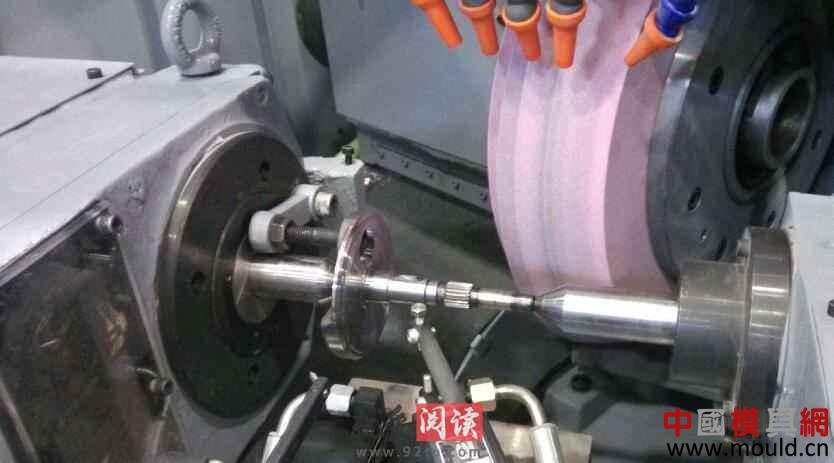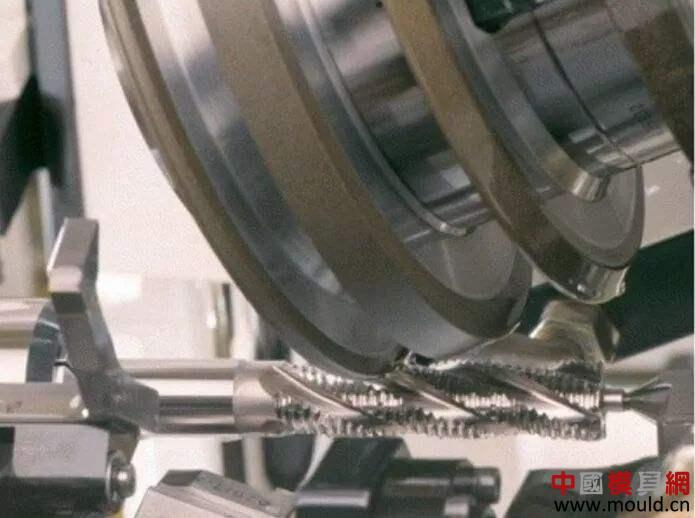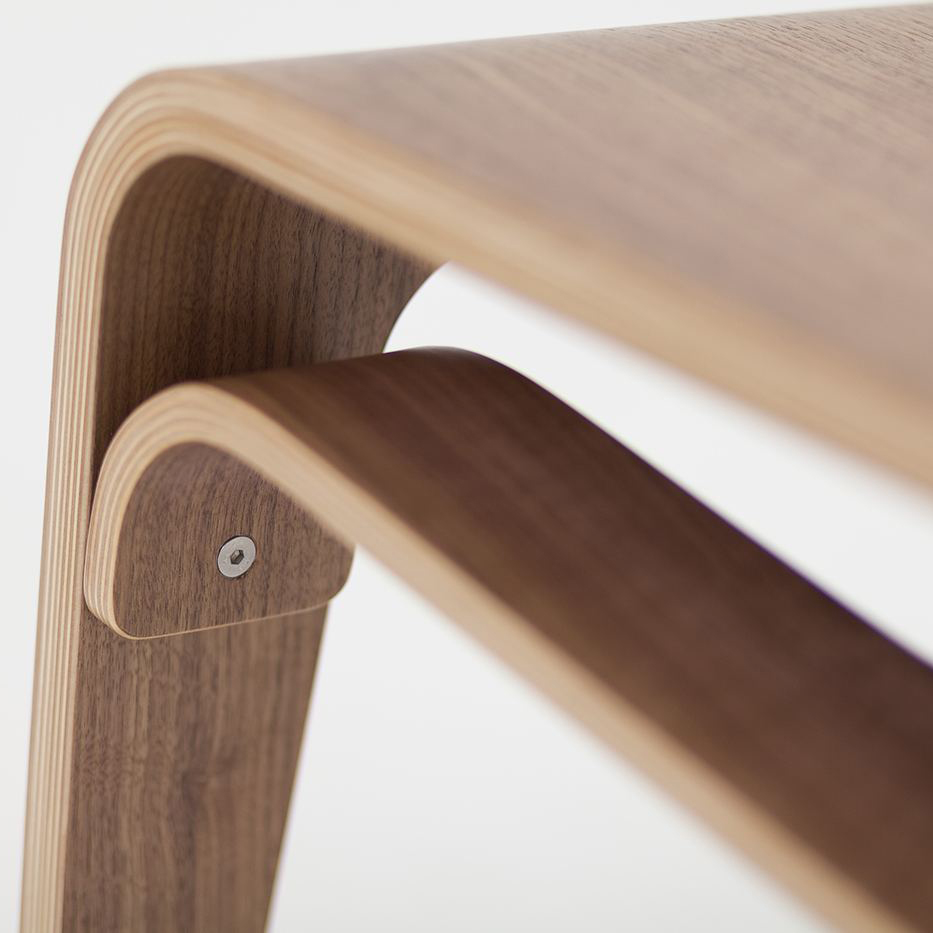Mold manufacturing is the continuation of mold design and is the process of verifying the correctness of the design. Advanced, high-efficiency, high-precision machine tools and automated production technology are used in modern mold production. The grinding work will account for 25% to 45% of the total manufacturing time of the mold. The development of China's mold industry has made great progress today, but it still has a big gap with the advanced level in foreign countries. The quality of finished products produced by molds is closely related to the precision of mold manufacturing, especially with the precision and surface roughness of the mold cavity surface. In actual production, the factors that affect mold failure are: 1 mold structure; 2 mold material; 3 cold and hot processing manufacturing process (forging, heat treatment, cutting, grinding, electrical processing, etc.); 4 mold working conditions. To improve the life of the mold, it is necessary to carefully analyze the cause of the mold damage and various influencing factors, and formulate methods and measures to overcome it. At present, there are two kinds of mold manufacturing process routes in the world: First, to improve the precision and quality of machining and electrical machining, so that the manual finishing of the work to a minimum, such as high-precision machine tools and high-speed forming milling machine and its processing technology The development will lay the foundation for the development of this process route. The second is to focus on the polishing and grinding processes in the finishing process, and the processing man-hours are almost equal to those of mechanical processing and EDM. A mold is composed of a large number of parts. The quality of the parts directly affects the quality of the mold, and the final quality of the parts is guaranteed by finishing. In most mold manufacturing enterprises in China, the methods used in the finishing process are generally grinding, electrical machining, and fitter processing. The influence of grinding process on the life of the mold has not been given sufficient attention. Due to the incorrect grinding process, the surface of the workpiece burns, grinding cracks, grinding marks and grinding stress are generated, resulting in subsequent processes and molds during service. Mechanical fatigue, cold and hot fatigue cause crack initiation, seriously affecting the life of the mold. 1, mold grinding The essence of the grinding process is that the workpiece is ground on the surface of the metal, and it is deformed under the squeezing and friction effects of countless abrasive particles, and then turns into wear debris and forms a smooth surface. The whole process of grinding shows the effect of force and heat. 1 During the grinding process, the machined surface generates thermal expansion under the effect of cutting heat. At this time, the temperature of the base metal is low, and therefore the surface generates hot compressive stress. When the grinding is finished, the surface temperature of the workpiece is reduced. Since the surface has already undergone thermal plastic deformation and is limited by the substrate, residual tensile stress is generated on the surface and residual compressive stress is generated in the inner layer. (TOOLOX tool steel has high strength, low internal stress and dimensional stability, easy to grind.) 2 When grinding, the grinding wheel and the workpiece are in contact with the arc surface. When the grinding wheel cuts, the workpiece is plastically deformed and the friction between the grinding wheel and the workpiece is severe. The grinding force between the grinding wheel and the workpiece is equal to the opposite direction and the grinding force is in the opposite direction. When the material is plastically deformed, relative displacement occurs between the metal molecules inside the workpiece material, internal friction is generated and heat is generated, and external friction between the grinding wheel and the workpiece also generates heat, and this grinding heat generates a local instant of 1000° C. in the grinding zone. High temperature, but the grinding wheel is not easy to heat transfer, so 80% of the heat into the workpiece and wear debris, while the metal in the solid state with temperature changes from a lattice to another lattice, the occurrence of metallurgical organization When grinding hardened steel, cooling is sufficient, secondary quenching of the surface layer occurs, part of the retained austenite is transformed into martensite, and the specific volume of martensite is larger, the specific volume increases, and the surface generates compressive stress. The cooling is not good, or the coolant is not used, the surface is tempered, and the martensite transformation occurs. The tensile stress occurs on the surface (for example, the volume of iron expands by 1% when γFe is converted to α-Fe). These stresses (residual Can reach 500 ~ 1000 MPa), if the material exceeds the yield limit, it will produce grinding cracks, in addition to the heat treatment after quenching the mold is not immediately tempered, the quenching temperature is too high, there are mesh carbonization, tempering after the horse did not temper Excessive austenite or residual austenite will produce phase changes during grinding and stress will cause cracks on the surface of the workpiece. Grinding crack is a very fine surface crack, and there are three types of grinding cracks: parallel lines, network cracks, and eight-shaped cracks. The direction of the crack is related to the shape of the mold. The direction of crack development is related to the grinding direction of the grinding wheel on the workpiece surface. The depth is within 0.03 mm. 3 When grinding, the grinding wheel is not sharp, the feeding amount is large, the cooling is bad, etc. The temperature generated on the surface of the workpiece reaches 300° C., causing burns to the surface of the workpiece. 2. Measures to reduce grinding defects 1 Reasonably select the grinding amount, use the fine grinding method with small radial infeed and even fine grinding. If the radial feed and the speed of the grinding wheel are appropriately reduced, and the axial feed is increased, the contact area between the grinding wheel and the workpiece is reduced, and the heat dissipation conditions are improved, thereby effectively controlling the surface temperature increase. 2 Reasonable selection and dressing of the grinding wheel, the use of white corundum grinding wheel is better, its performance is hard and brittle, and easy to produce a new cutting edge, so the cutting force is small, the grinding heat is small, the use of medium grain size in the grain size, such as 46 ~ 60 mesh is better, in the grinding wheel hardness using soft and soft (ZR1, ZR2 and R1, R2), that is, coarse-grained, low hardness grinding wheel, self-excitement can reduce the heat of cutting. It is very important to select the proper grinding wheel for the finish grinding. For the high vanadium and high molybdenum conditions of the die steel, the GD single crystal corundum grinding wheel is suitable. When processing hard alloys and materials with high quenching hardness, the organic binder is preferred. Grinding wheel, organic binder grinding wheel from the good grinding, grinding the workpiece roughness up to Ra0.2μm, in recent years, with the application of new materials, CBN (cubic boron nitride) grinding wheel shows very good processing results, In CNC grinding machine, coordinate grinding machine, CNC internal and external grinding machine, the effect is better than other types of grinding wheel. In the grinding process, it is necessary to pay attention to dressing the grinding wheel in time to maintain the sharpness of the grinding wheel. When the grinding wheel is passivated, it will slide and squeeze on the surface of the workpiece, causing the surface of the workpiece to burn and reduce the strength. 3 The rational use of cooling lubricant, play a role in cooling, washing, lubrication, keep the cooling lubrication and clean, thus controlling the grinding heat within the allowable range, to prevent the workpiece from thermal deformation. Improve cooling conditions during grinding, such as using oil-impregnated grinding wheels or internally cooled grinding wheels. The cutting fluid is introduced into the center of the grinding wheel, and the cutting fluid can directly enter the grinding zone to exert an effective cooling effect and prevent the surface of the workpiece from being burned. 4 The quenching stress after heat treatment is reduced to a minimum, because the quenching stress, the network carbonization structure under the action of the grinding force, the organization produces the phase change can cause the workpiece to crack easily. For high-precision molds to eliminate residual stresses from grinding, low-temperature aging treatments should be performed after grinding to increase toughness. 5 eliminate the grinding stress can also be immersed in a 260 ~ 315 °C salt bath for 1.5 min, then cooled in 30 °C oil, so the hardness can be reduced by 1HRC, residual stress decreased by 40% ~ 65%. 6 For precision grinding of precision molds with a dimensional tolerance within 0.01 mm, pay attention to the influence of ambient temperature and require constant temperature grinding. From the calculations, it can be seen that when the temperature difference is 3°C, the 300 mm long steel piece has a change of about 10.8 μm (10.8=1.2×3×3, and the deformation amount is 1.2 μm/°C per 100 mm), and all the finishing steps are required. Consider the impact of this factor. 7 Adopt electrolytic grinding process to improve the precision and surface quality of the mold. During electrolytic grinding, the grinding wheel scrapes the oxide film: instead of grinding the metal, the grinding force is small, the grinding heat is also small, there is no phenomenon such as grinding burr, cracks, burns, etc. Generally, the surface roughness can be better than Ra0 .16μm; In addition, the wear of the grinding wheel is small, such as grinding cemented carbide, the wear of the silicon carbide grinding wheel is about 400% to 600% of the weight of the cemented carbide, and the abrasion of the grinding wheel is used in electrolytic grinding. The amount is only 50% to 100% of the cemented carbide removal amount.
Bending Wood Glue: According to the production process and formaldehyde emission requirements and bonding strength standards of different factories, the modified urea-formaldehyde resin glue powder formula and the modified water-based glue formula glue series are used to meet the processing needs of this process. Yongte bending-resistant wood glue is an advantageous product in the woodworking glue series, which can be customized according to customer needs to meet the needs of customers' specific application process.
Bent Wood Glue,Rubber Powder For Wood,High Frequency Bending Wood Glue,Hot Pressed Bending Wood Glue GUANGZHOU INTERNET WOOD GLUE MANUFACTURER CO. LTD. , https://www.iwghotmelt.com

